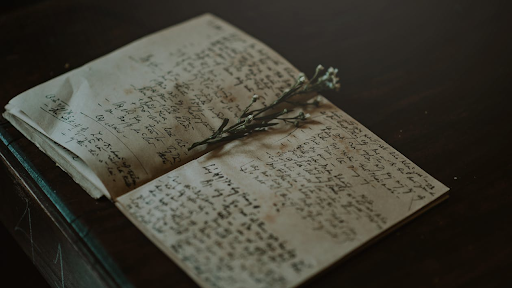When historians, researchers, or students sift through documents to uncover the past, they rely on primary and secondary sources to piece together an accurate narrative. But where do autobiographies fit in? Is an Autobiography a Primary Source? or do they fall into a different category altogether? The answer isn’t always straightforward, and understanding the nuances can help you determine when an autobiography is a credible reference and when it should be approached with caution.
What Is a Primary Source?
Before we examine autobiographies, let’s clarify what makes a document a primary source. In research, a primary source is an original, first-hand account created during the period being studied. These materials offer direct evidence of historical events, unfiltered by later interpretations.
Examples of primary sources include:
- Diaries and personal letters
- Speeches and interviews
- Photographs and official records
- Eyewitness testimonies
Primary sources are invaluable because they provide raw, unmediated perspectives. When you read a soldier’s wartime letters or a scientist’s lab notes, you’re accessing their thoughts and experiences in real-time.
Autobiographies
Autobiographies occupy a fascinating middle ground between primary and secondary sources. At first glance, they seem like obvious primary sources after all, they are first-person accounts written by someone who lived through the events they describe. However, there’s a critical factor that complicates this classification.
Most autobiographies are written years or even decades after the events they recount. Unlike a diary entry penned in the moment, an autobiography is a retrospective narrative, shaped by memory, reflection, and sometimes even the author’s desire to shape their legacy. This distance from the original events introduces questions about accuracy, bias, and selective storytelling.
For example, The Autobiography of Benjamin Franklin was written toward the end of his life, blending factual events with philosophical musings and personal justifications. While it’s a vital historical document, historians recognize that Franklin’s account may emphasize certain achievements while downplaying others.
When Is an Autobiography a Primary Source?
Despite these complexities, autobiographies can function as primary sources in specific contexts:
Personal Perspective
If your research focuses on how an individual perceived their experiences (rather than the objective facts of those experiences), an autobiography is a goldmine. For instance, studying Nelson Mandela’s Long Walk to Freedom helps us understand his mindset during the anti-apartheid struggle, even if some details are filtered through memory.
Cultural & Social History
Autobiographies reveal the norms, values, and struggles of their time. The Diary of a Young Girl by Anne Frank, though technically a diary later edited into autobiographical form, provides an intimate look at life during the Holocaust.
Author Intent
Some autobiographies are deliberately crafted as historical records. The Narrative of the Life of Frederick Douglass was written to document the brutality of slavery and fuel the abolitionist movement. Its purpose as a first-hand testimony makes it a definitive primary source.
Limitations of Autobiographies as Primary Sources
While autobiographies offer rich insights, researchers must be aware of their potential drawbacks:
Memory Gaps & Errors
Human memory is fallible. Over time, details blur, sequences get confused, and minor events may be unintentionally exaggerated or omitted.
Bias & Self-Presentation
Autobiographers often curate their stories to present themselves in a particular light. Politicians, celebrities, and even ordinary people may emphasize flattering moments while glossing over mistakes.
Editorial Influence
Many autobiographies are co-written or heavily edited, which can alter the original voice and perspective.
A savvy researcher will cross-reference autobiographical claims with other primary sources (like letters, newspapers, or official documents) to verify their accuracy.
Autobiography vs. Memoir: Does the Difference Matter?
You might wonder if memoirs have a different status than autobiographies when it comes to primary sourcing. Autobiographies typically cover the author’s entire life, offering a broad (if selective) timeline. Memoirs zoom in on specific periods or themes, often with deeper emotional reflection.
Both can serve as primary sources for studying personal experiences, but memoirs may provide more concentrated insight into particular events think of Elie Wiesel’s Night, which focuses intensely on his Holocaust survival, rather than his whole life.
How Researchers Use Autobiographies
When official records are incomplete or one-sided, personal accounts offer alternative perspectives. For example, autobiographies of enslaved people counterbalance the narratives written by their oppressors.
The way an author describes themselves and their world can reveal societal attitudes. Maya Angelou’s I Know Why the Caged Bird Sings illustrates the intersections of race, gender, and resilience in mid-20th-century America.
Comparing multiple autobiographies from the same era (or by the same person at different ages) can show how beliefs and cultures evolved.
Tips for Evaluating Autobiographies as Sources
If you’re using an autobiography in research, ask these questions to assess its reliability:
An account penned shortly after events is generally more reliable than one written decades later.
Was it to inform, persuade, or defend their reputation?
Do letters, news reports, or other witnesses support the author’s version?
Are there glaring omissions or avoided topics that might skew the narrative?
Famous Autobiographies and Their Historical Impact
To see the power of autobiographies as primary sources, consider these works:
- The Story of My Life by Helen Keller. A landmark in disability studies shows how Keller experienced and overcame her challenges.
- A Moveable Feast by Ernest Hemingway. While debated for its accuracy, it paints a vivid portrait of 1920s Paris and the Lost Generation.
- Bossypants by Tina Fey. A modern example where humour and cultural commentary intersect with personal history.
Each of these books provides a window into its author’s world, but each must be read with an understanding of its context and potential biases.
When to Choose an Autobiography Over Other Sources
Autobiographies shine when you need:
- Emotional Truth: The visceral feel of an era, not just its facts.
- Marginalized Voices: Stories that official histories might have ignored.
- Psychological Depth: How events shape a person’s identity and choices.
For hard facts (dates, laws, statistical trends), you’d supplement autobiographies with government records, newspapers, or scholarly analyses.
So, is an autobiography a primary source? Yes, but with caveats. It’s a first-hand account that offers irreplaceable personal perspectives, but its retrospective nature means it shouldn’t stand alone as evidence. Used wisely alongside other sources and with a critical awareness of its limitations an autobiography can illuminate history in ways no other document can.
For writers, this duality is a reminder: Your personal story, even if written years later, could become a vital piece of the historical record. Whether you’re researching or composing your own life story, recognizing the power and pitfalls of autobiography ensures a richer, more truthful engagement with the past.

